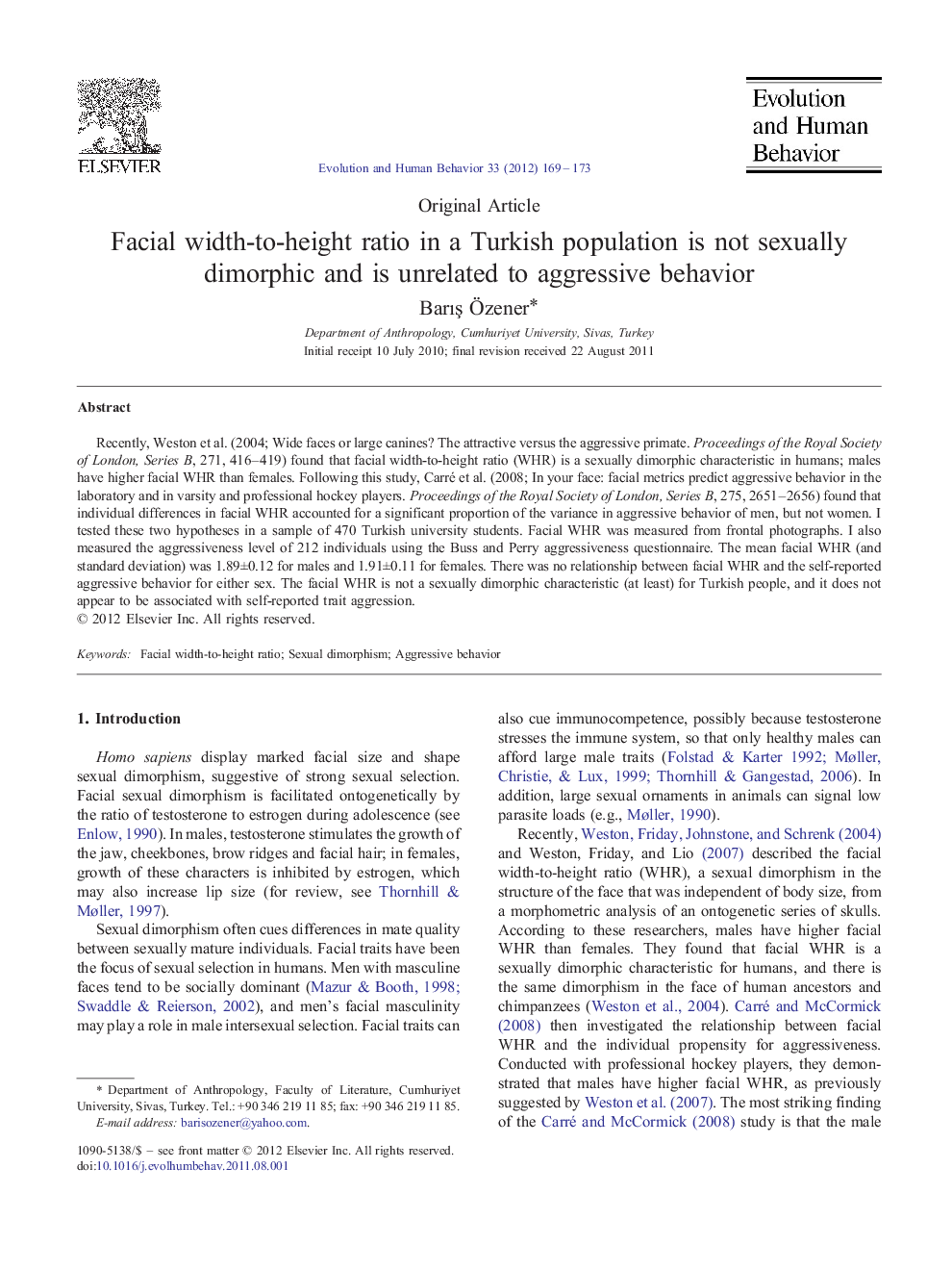| Article ID | Journal | Published Year | Pages | File Type |
|---|---|---|---|---|
| 943253 | Evolution and Human Behavior | 2012 | 5 Pages |
Recently, Weston et al. (2004; Wide faces or large canines? The attractive versus the aggressive primate. Proceedings of the Royal Society of London, Series B, 271, 416–419) found that facial width-to-height ratio (WHR) is a sexually dimorphic characteristic in humans; males have higher facial WHR than females. Following this study, Carré et al. (2008; In your face: facial metrics predict aggressive behavior in the laboratory and in varsity and professional hockey players. Proceedings of the Royal Society of London, Series B, 275, 2651–2656) found that individual differences in facial WHR accounted for a significant proportion of the variance in aggressive behavior of men, but not women. I tested these two hypotheses in a sample of 470 Turkish university students. Facial WHR was measured from frontal photographs. I also measured the aggressiveness level of 212 individuals using the Buss and Perry aggressiveness questionnaire. The mean facial WHR (and standard deviation) was 1.89±0.12 for males and 1.91±0.11 for females. There was no relationship between facial WHR and the self-reported aggressive behavior for either sex. The facial WHR is not a sexually dimorphic characteristic (at least) for Turkish people, and it does not appear to be associated with self-reported trait aggression.
